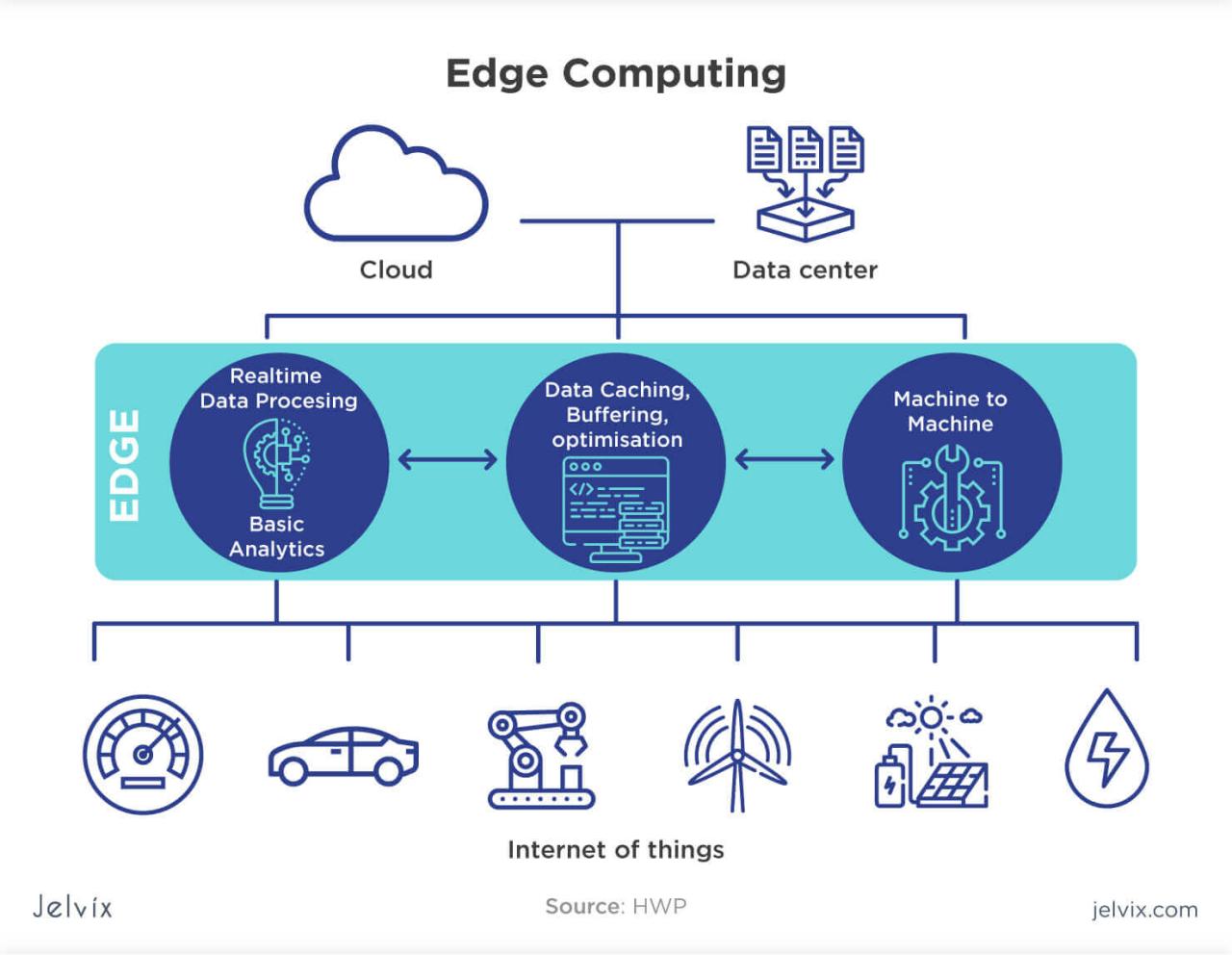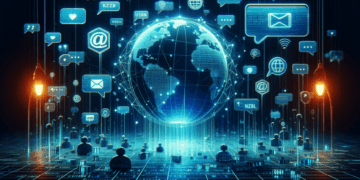In today’s hyper-connected world, where speed, accuracy, and instant decision-making define business success, the demand for real-time analytics is growing exponentially. As a response to the limitations of traditional centralized computing, edge computing has emerged as a revolutionary technology, enabling rapid data processing close to the source. This shift is transforming industries—from manufacturing and healthcare to retail and telecommunications.
This article explores how edge computing empowers real-time analytics, the technology behind it, its benefits, real-world applications, challenges, and future potential.
What Is Edge Computing?
Edge computing is a decentralized computing framework where data is processed at or near the data source instead of being sent to a centralized cloud or data center. This proximity reduces latency, conserves bandwidth, and ensures faster response times.
Key Concepts:
A. Data Locality – Processing occurs on-site or at the edge devices themselves (e.g., IoT devices, sensors, gateways).
B. Reduced Latency – By eliminating long trips to centralized servers, edge computing allows for near-instantaneous data analysis.
C. Bandwidth Optimization – Only essential data is transmitted to the cloud, reducing overall bandwidth consumption.
D. Autonomous Decision-Making – Devices can make decisions in real time without waiting for cloud-based validation.
What Is Real-Time Analytics?
Real-time analytics refers to the ability to process and analyze data as it is generated, allowing for immediate insights and decisions. It is crucial in scenarios where time-sensitive actions are required, such as detecting fraud, monitoring patient vitals, or managing industrial operations.
Edge computing enhances real-time analytics by enabling this data processing to happen at the edge of the network, drastically reducing the time between data generation and actionable insight.
How Edge Computing Enhances Real-Time Analytics
Edge computing and real-time analytics are a powerful pair. Here’s how they work together to deliver unprecedented speed and efficiency:
A. Faster Data Processing
By analyzing data locally, edge systems eliminate the delay of sending information to a remote cloud server and waiting for results. This is essential for applications such as autonomous vehicles, where decisions must be made in milliseconds.
B. Reduced Data Transmission
Not all raw data needs to be sent to the cloud. Edge computing filters and pre-processes data, sending only relevant information for deeper analysis or storage, which reduces network congestion.
C. Improved Reliability
In scenarios where internet connectivity is unreliable, edge computing ensures that analytics can still run smoothly without depending on constant cloud access.
D. Enhanced Security and Compliance
Processing data locally helps maintain compliance with data regulations and reduces exposure to cybersecurity threats by limiting the amount of sensitive information sent over networks.
Core Components of Edge Computing Systems
Understanding the architecture of an edge computing system is key to grasping how it enables real-time analytics.
A. Edge Devices
These include IoT sensors, smart cameras, wearables, and any equipment that generates data at the user or industrial level.
B. Edge Gateways
Gateways act as intermediaries between edge devices and central systems, offering processing capabilities, security protocols, and data filtering.
C. Local Servers or Micro Data Centers
Some systems use miniaturized servers that are deployed closer to data sources to conduct intensive computations.
D. Edge Analytics Software
This software enables data analysis on the edge, using machine learning models, pattern detection, and anomaly recognition algorithms.
Benefits of Edge Computing in Real-Time Analytics
Integrating edge computing with analytics capabilities delivers numerous advantages to businesses and organizations.
A. Ultra-Low Latency
Edge-based analytics delivers sub-second response times, vital for time-sensitive applications such as medical diagnostics or industrial automation.
B. Scalability and Flexibility
Edge architectures can be scaled horizontally by adding more edge nodes without requiring massive upgrades to centralized systems.
C. Enhanced User Experience
In retail or entertainment, for instance, users benefit from personalized services and faster interactions due to low-latency data processing.
D. Greater Operational Efficiency
Organizations can monitor, optimize, and respond to operational events instantly, increasing productivity and reducing costs.
E. Localized Decision-Making
Edge devices can act independently, making decisions without central approval, which is crucial for remote or mobile deployments.
Industries Leveraging Edge Computing for Real-Time Analytics
Edge computing is revolutionizing how different sectors use and act upon data. Below are examples of industry-specific applications.
A. Manufacturing
-
Real-time equipment monitoring for predictive maintenance
-
Quality control using AI-powered image recognition on the production line
-
Autonomous robotic systems for material handling and assembly
B. Healthcare
-
Wearable devices analyzing patient vitals and sending alerts in emergencies
-
Smart diagnostic equipment performing on-site analysis
-
AI-assisted surgery using real-time imaging feedback
C. Retail
-
Smart shelves and inventory tracking
-
Personalized promotions based on real-time shopper behavior
-
Queue management and foot traffic analysis
D. Transportation and Logistics
-
Fleet tracking and dynamic route optimization
-
Real-time traffic monitoring and predictive ETA adjustments
-
Sensor-based vehicle health diagnostics
E. Energy and Utilities
-
Monitoring grid performance and energy distribution in real-time
-
Managing distributed energy resources like solar and wind
-
Detecting faults and outages instantly
F. Smart Cities
-
Traffic light optimization
-
Air quality and noise pollution monitoring
-
Emergency response coordination using real-time sensor data
Key Technologies Powering Edge-Based Real-Time Analytics

Several advanced technologies work in tandem to make edge computing a reality:
A. Internet of Things (IoT)
Connected devices gather data from the environment, which is then processed at the edge to deliver immediate insights.
B. Artificial Intelligence and Machine Learning
Edge AI enables devices to process data using trained models to detect patterns or anomalies instantly.
C. 5G Connectivity
The advent of 5G networks enhances the edge with ultra-fast data transmission and minimal latency.
D. Containerization and Microservices
Software tools like Docker allow lightweight, scalable applications to run at the edge with minimal resource use.
E. Fog Computing
Often used alongside edge computing, fog computing extends capabilities across a network of devices, improving data orchestration between edge and cloud.
Challenges in Implementing Edge Computing for Analytics
Despite its benefits, edge computing is not without challenges. Organizations must address several factors when deploying edge analytics.
A. Infrastructure Complexity
Deploying and managing numerous edge devices across locations can become complex without a robust IT framework.
B. Data Security
Each additional edge node becomes a potential vulnerability. Proper encryption, authentication, and endpoint security are essential.
C. Maintenance and Updates
Ensuring all edge devices have updated firmware and models can be difficult, especially in remote environments.
D. Integration with Existing Systems
Many legacy systems are not built for edge integration, requiring costly upgrades or complete overhauls.
E. Data Governance
With processing happening in multiple locations, maintaining consistent governance, compliance, and audit trails can be a challenge.
How to Successfully Deploy Edge Computing for Real-Time Analytics
To reap the full benefits of edge analytics, businesses should adopt a strategic, phased deployment plan.
A. Define Use Cases and Objectives
Start by identifying processes that would benefit most from real-time decision-making, such as operations requiring low-latency feedback.
B. Choose the Right Hardware
Select edge devices based on performance needs, environmental durability, and integration capabilities with current infrastructure.
C. Implement Scalable Architecture
Adopt a modular design that allows new edge nodes to be added or removed without disrupting the entire system.
D. Prioritize Security from the Start
Design your edge ecosystem with built-in security—encrypt data, secure endpoints, and ensure identity management.
E. Train Models with Quality Data
Real-time analytics at the edge requires accurate machine learning models. Use diverse and high-quality datasets for training.
F. Monitor Performance Continuously
Use centralized dashboards and analytics to monitor how edge nodes perform, identify bottlenecks, and make improvements.
The Future of Edge Computing and Real-Time Analytics
As industries demand ever-faster insights, the fusion of edge computing with real-time analytics will continue to evolve. Here’s what the future holds:
A. Hyper-Personalization
Brands will be able to deliver experiences uniquely tailored to individual preferences, updated in real time based on behavior and context.
B. Autonomous Systems
From self-driving cars to fully automated factories, edge analytics will be the brain behind intelligent, self-regulating systems.
C. AI at the Edge
Edge AI will become more powerful, with models capable of learning and adapting on the fly rather than relying solely on cloud updates.
D. Federated Learning
Instead of sending data to the cloud, machine learning models will be trained across edge devices, preserving privacy and decentralizing intelligence.
E. Edge-as-a-Service (EaaS)
Businesses will subscribe to edge capabilities from cloud providers, similar to Software-as-a-Service (SaaS), reducing upfront infrastructure costs.
Conclusion: Why Edge Is the Future of Analytics
Edge computing is rapidly transforming how we analyze and act upon data. By empowering real-time analytics, it reduces latency, enhances responsiveness, and opens new possibilities for innovation across sectors. Businesses that adopt this paradigm early will position themselves as agile, data-driven leaders ready to thrive in an increasingly digital world.
Whether it’s improving operational efficiency, enhancing customer experience, or enabling new business models, edge-powered analytics is not just an upgrade—it’s a strategic revolution.







